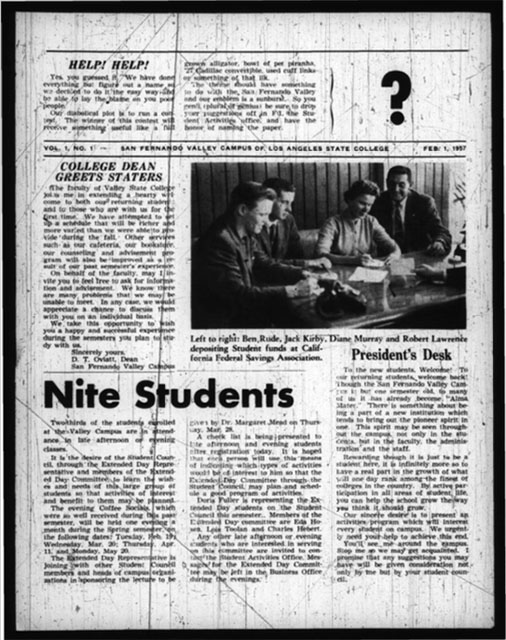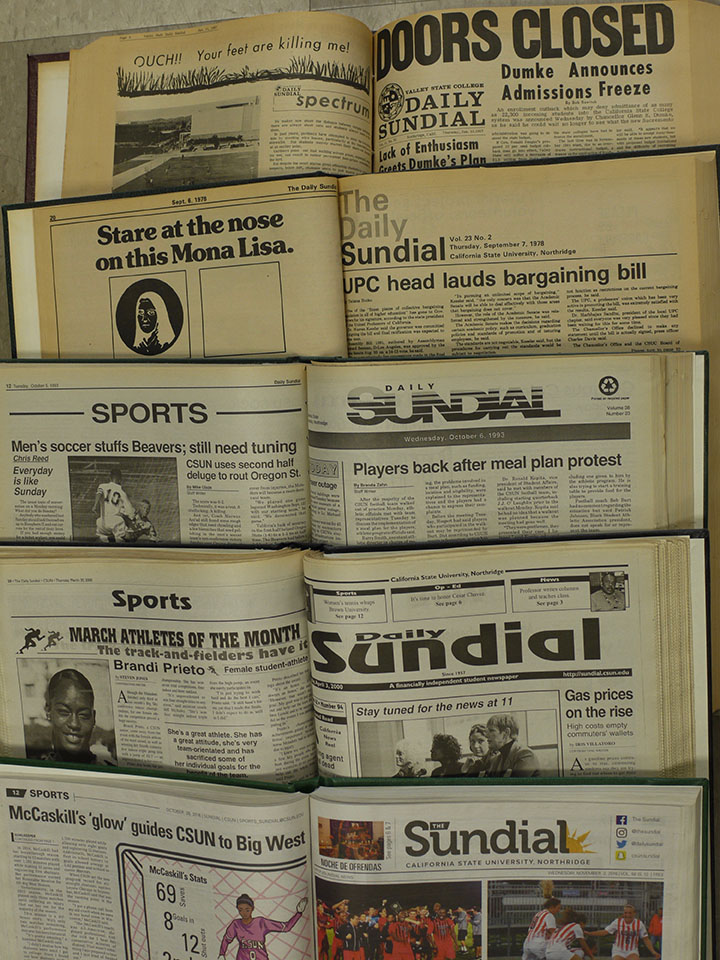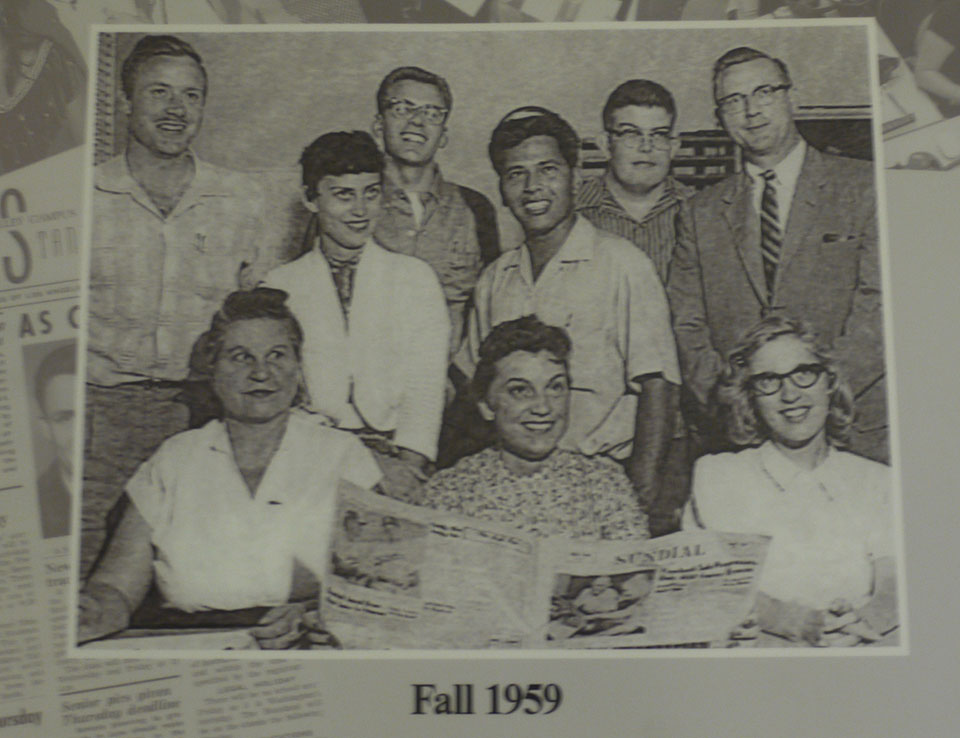CSUN’s Sundial Completely Digitized
California State University, Northridge’s Sundial has been a part of the campus since it was known as San Fernando Valley State College. When the first issue was published in the spring of 1957, the publication did not have a formal name. The cover showed a large black question mark, with a call for students to help think of a clever name.
Over time, the name of the publication varied, from The San Fernando Valley Campus State Standard, Daily Sundial, State Sundial, Valley State Sundial and finally to what is now known as The Sundial. Its first issue covered stories such as Delmar T. Oviatt, the college dean at the time, welcoming students back from break, and various stories on local activities.
From diverse protests to large events on campus, the student-led Sundial has captured the heart and attitude of students, faculty and staff on campus for more than 60 years.
In order to preserve CSUN’s history, The Sundial has been completely digitized and archived in the Delmar T. Oviatt Library. This grueling process of taking editions published and photographing every page, then uploading them to a database, took the Oviatt staff years to complete, with the help of the Online Computer Library Center. The Sundial used to print four issues every week, but in recent years, publication was cut to one printed issue each week and other coverage offered through The Sundial website.
“Student writers have covered CSUN’s pivotal points, from ethnic studies [taking] off to the Northridge earthquake and the campus’ explosive growth,” said Gretchen Macchiarella, publisher of The Sundial since 2015. “The digitization of The Sundial is able to show those important moments.”
Stephen Kutay, a Digital Services Librarian at the Oviatt, played a large part in the digitization process. When Kutay joined the CSUN faculty, only about half of The Sundial was archived.
“There were many gaps [in] what we had at that time, and many sections were missing,” Kutay said. “We had to get into contact with the journalism department and physically go through their bound newspapers to fill in those gaps, some of which were beyond wear.”
Kutay emphasized the value these archives hold for CSUN.
“When we digitize these documents, we’re preserving history forever. These documents no longer have an expiration date,” he said. “We’re able to show a direct look into CSUN’s past, unaltered.”
Kutay was able to complete the archive with a grant from the campus quality fee, a grant funded by and used for students. The grant allowed him to hire students and faculty to complete the process.
It’s important for past students to see their work at The Sundial archived, said Cynthia Rawitch, journalism professor emerita and publisher from 1984-94.
“There would be no Sundial if there were no students,” Rawitch said. “It’s a way for people to look back at the good times they had at The Sundial and see the stories they wrote.”
Rawitch also noted that the digitization will help alumni pursue employment opportunities.
“People can now easily pull up the work they did at The Sundial and show it to an employer they are interested in working for,” she said. “It can potentially open many doors for them.”
The Sundial is completely run by CSUN students, with every issue and story created and edited by students. For every story, there is a strict deadline, and student writers must be able to manage their schedule accordingly.
Tandy Lau, a journalism and Asian American studies double major and student writer at The Sundial, said he puts a lot of thought into his writing and reporting process for the paper.
“I like to come prepared when I write my stories,” he said. “I write my questions, outline my story and record so that I have a consistent story all around.”
Lau said he hasn’t decided exactly what he wants to do after graduation.
“I do know that if I work hard enough, I will be able to find something to do that I’ll really enjoy,” he said. “The Sundial is definitely preparing me for this.”
For decades, the newspaper’s student writers have provided a taste of CSUN campus life, Macchiarella said.
“The Sundial gives the reader a feel for the school,” she said. “It’s the small stuff and the in-betweens that show CSUN’s student culture. I am excited that people are now able to see that with The Sundial archived.”
Macchiarella said the archive shows the changing nature of the journalism industry and how students are contributing to those changes.
To see The Sundial archives, please visit the Oviatt Library website.




 experience
experience